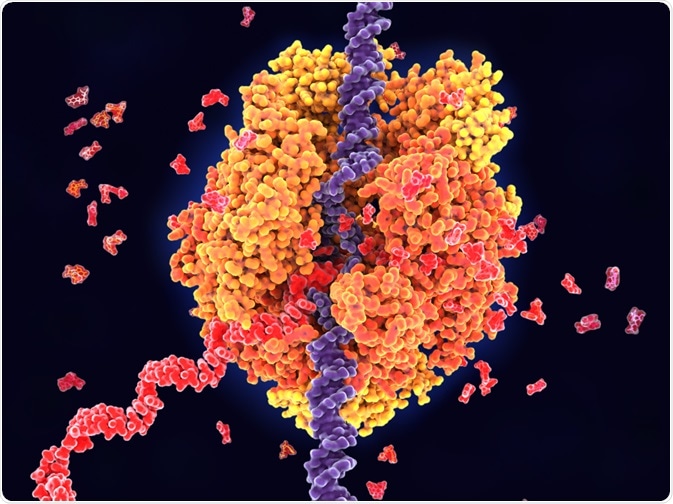Enhancer RNAs, or eRNAs, are short non-coding RNA molecules that are transcribed from the loci of enhancers. They are involved in the regulation of gene transcription and can be a therapeutic target for diseases.
 Juan Gaertner | Shutterstock
Juan Gaertner | Shutterstock
Enhancer RNAs were discovered in 2010 through high-throughput sequencing to detect stimulus-dependent enhancers. This revealed the RNA polymerase II-dependent transcription of enhancer RNAs. These are generally of 0.5–2 kb in length.
In addition, the expression level of enhancer RNAs typically lies in the same range as the expression of their parent enhancers, thus showing that enhancer function and enhancer RNA expression are correlated.
How are enhancer RNAs detected?
High coverage Next Generation Sequencing (NGS) is required to detect enhancer RNAs. This is because the expression level of enhancer RNA is 19–34 fold lower than the expression of gene transcripts. The stability of the enhancer RNAs is also much lower than mRNA. Thus, methods such as global nuclear run-on sequencing (GRO-seq) and precision nuclear run-on sequencing (PRO-seq), or sensitive methods such as cap analysis of gene expression sequencing are required.
Other methods to enhance the presence and detection of selected RNAs include chromatin immunoprecipitation, in situ hybridization, and the BruUV-seq method where UV light is used for deep sequencing of nascent RNAs. However, as enhancers are only active at specific times and locations, these methods may be most effective only during times the enhancers are functionally active.
What roles do enhancer RNAs carry out?
Indicators of active enhancers
Studies show that enhancer RNAs can be used to determine if an enhancer is silent or active. A study showed that tissue-specific expression of enhancers can be determined by the presence of enhancer RNAs more than the presence of epigenetic markers.
Transcriptional regulation of target genes
The functions of enhancer RNAs have been controversial where initially it was thought that the enhancer RNAs are by-products of transcription. However, subsequent studies have shown that enhancer RNAs can regulate the expression of multiple genes by binding to them.
Studies performed on a large-scale show that the expression of enhancer RNAs and target gene expression are positively correlated. One of the ways this can occur is via its action on RNA Polymerase II. Enhancers also physically interact with promoters forming E-P loops. Research has also shown that enhancer RNA can strengthen the E-P looping and upregulate the expression of specific genes.
Enhancer RNAs in disease
Enhancer RNA and inflammation
Studies show that IL1β, an enhancer RNA, is involved in the NF-KB signaling pathway and controls the proinflammatory response. Knockdown of this enhancer RNA could reduce the inflammatory response.
Enhancer RNA and neurodegenerative disorders
Enhancers may carry mutations that may have a role in neurodevelopmental and neuropsychiatric disorders. Studies have found more than a hundred enhancers in the brain, and most of the enhancers in the striatum of mouse brains, were found to be transcribed into enhancer RNAs. Enhancer RNAs also contain genetic variants that have found to be associated with autistic spectrum disorders.
Enhancer RNA and cancer
Several hundred enhancer RNAs were found to be differentially expressed in prostate cancer. In MCF-7, a breast cancer cell, estrogen-induced transcription of eRNA was found to be upregulated. Another study showed that enhancer RNAs are significantly reduced in throat cancer.
Enhancer RNA in diabetes
Rosiglitazone, an anti-diabetic drug, has been shown to improve insulin sensitivity by controlling blood glucose. This drug also upregulated the levels of enhancer RNAs at specific sites suggesting the role of enhancer RNA in regulating glucose levels and diabetes.
Further Reading
Last Updated: Apr 24, 2019